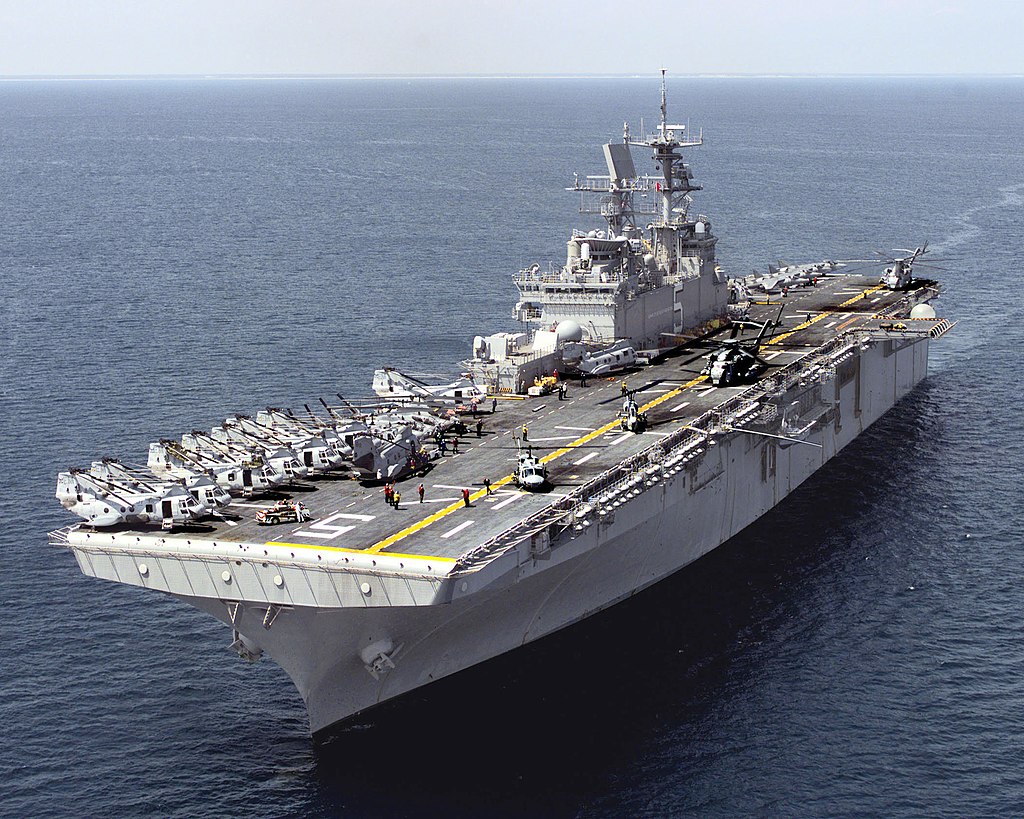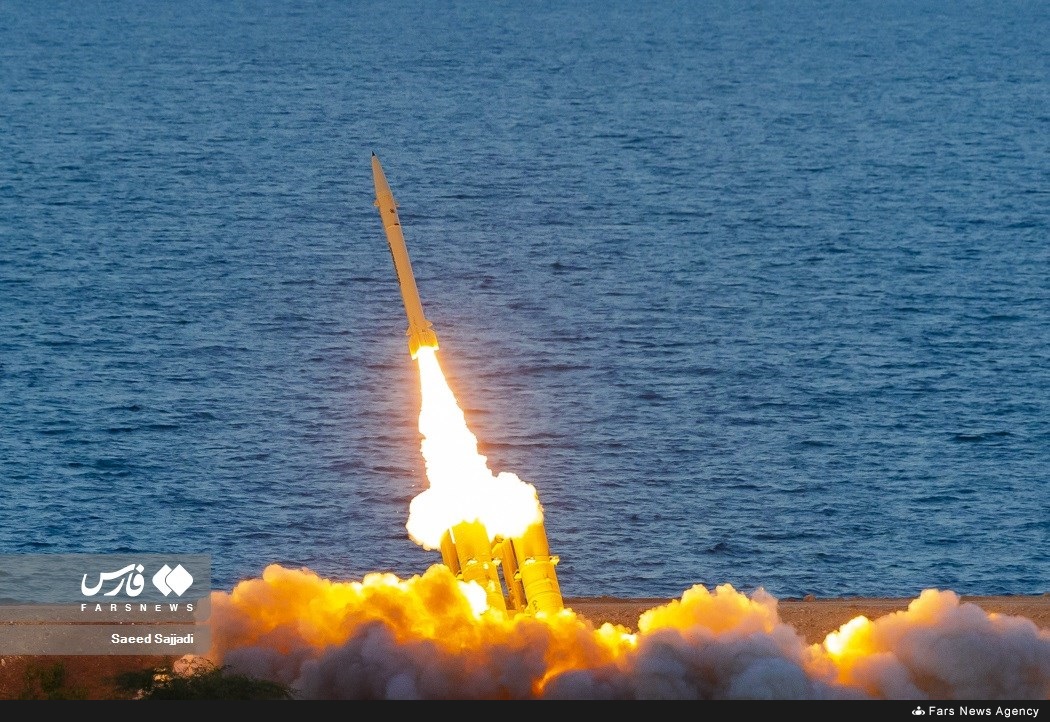Recent weeks have been marked by a significant increase in tension in the Gulf, already evident for several months, between Iran and the United States. The US administration has adopted a strong, determined policy regarding oil smuggling activities by Iran, which has managed to reach an export rate of 1.3 million barrels a day, blatantly circumventing the imposed sanctions. As part of this effort, several tankers suspected to be part of the Iranian smuggling apparatus have been stopped by the US Fifth Fleet. In reaction and in an attempt to deter the United States from stopping other tankers, the Iranians have stopped several tankers on the pretext of non-compliance with international maritime navigation rules.
These developments are part of an ongoing US struggle against Iran’s conduct in the Gulf, which includes the formation of a US-led coalition of 11 countries in order to protect trade and shipping in the region. In an overt display of cooperation, a US warship crossed the Strait of Hormuz in May, carrying aboard the Commander of the Fifth Fleet and his French and British counterparts. Earlier, in April, the Pentagon announced that a nuclear submarine was sent to the Gulf, in a candid statement aimed at making clear to Tehran that Washington was prepared to react, should the freedom of navigation in the Gulf be impaired or Americans in Syria and Iraq be harmed.
As further reinforcement chosen by the US administration, the amphibian assault ship USS Bataan and the dock landing ship USS Carter Hall are making their way to the Gulf, carrying thousands of marines. F-16 and F-35 jets have also been deployed in the region. According to a report by AP, the US military is considering another unusual move – positioning armed troops on civilian tankers and merchantmen sailing through the Gulf, in order to prevent hostile takeover by Iranian forces. Such a step, not seen from Washington in decades, would require the consent of the nation whose flag flies on the particular vessel, as well as the country of citizenship of its owner. Such complexity may very well hinder the realization of this idea, but the administration has made it clear, through various spokespersons, that it is determined to guarantee free passage through the Strait and in its vicinity. A recent meeting between the commander of the naval forces of the Fifth Fleet and the Secretary General of the Gulf Cooperation Council (GCC) likely focused on this issue as well.

In response to these moves by the US, the navy of the Revolutionary Guard held a surprise drill on three islands that are the subject of an ongoing dispute between Iran and the United Arab Emirates, which also included the deployment of operational units aboard ships carrying missiles, UAVs, and various electronic equipment. Iran has even announced that two new types of missiles were unveiled during the drill – the Qadir cruising missile and a ballistic missile called Fath 360, both of which, the Iranians claim, boast artificial intelligence capabilities. These steps, meant to convey a threatening message to Washington, were accompanied by an attempt to drive a wedge between the US and the Gulf states through statements claiming that the parties in the region are capable of managing their own affairs without the intervention of foreign entities. The US policy in the Gulf has become even more significant from Tehran’s point of view in light of the ongoing dialogue between the US and Saudi Arabia regarding a possible defense pact between them, the Saudi demand from the administration that it be allowed to possess a nuclear fuel cycle within its territory, as well as the possibility of normalization with Israel. Iran has already commented on the latter, claiming that the establishment of relations between Israel and Saudi Arabia would not contribute to the stability and security in the Gulf – a clear hint of its frustration and a threat against Riyadh.
The Gulf is not the only epicenter of tension between the United States and Iran in the Middle East: the two sides are on the brink of a possible confrontation in Syria as well. US senior figures claimed recently that Iran is acting in collaboration with Russia according to an orderly plan aimed at driving the US forces out of Syria. This has led to increased friction between the Shiite militias operating in Syria and the US forces stationed around al-Tanf. A drone strike against the base in April killed one American working for a civilian company, and wounded five soldiers. In turn, the US retaliation against pro-Iranian militia forces in Syria claimed the lives of several Iranians. Consequently, in an unprecedented dramatic resolution, the Pentagon decided to deploy a squadron of A-10 aircraft armed with GBU-39/B bunker buster bombs to the region. The commander of the aerial forces of the US Central Command (CENTCOM) stated that this marked an increase of 50 percent in the number of US assault aircraft in the region.

The tension between the US and Iran has risen in parallel with the renewed efforts in recent months, mainly through Qatari and Omani mediation, to resume the dialogue between the two countries on prisoner exchange as well as the nuclear issue. Following a year of stagnation since the termination of the talks in August 2022, there have been various reports about a rapprochement. And indeed, in recent days there have been reports of an agreement regarding a prisoner exchange, it return for which Washington consented to release Iranian assets locked in South Korea. Joining the recent release of frozen assets in Iraq, there will be approximately $10 billion, which Washington claims will be used solely for humanitarian purposes. The ongoing discussions on the nuclear issue have not yielded any agreement, but some leaked information indicates a possibility for understandings that would include an Iranian commitment not to enrich uranium to more than 60 percent, and perhaps to refrain from accumulating any further quantities of enriched uranium to this level, albeit without giving up what is has acquired so far. The report of the International Atomic Energy Agency due in late August, leading up to the Board of Governors meeting in September, is expected to shed some light on this issue.
The continuation of the negotiations on the nuclear issue through mediation, alongside the regional escalation, has created a unique situation in which both parties are trying to distinguish between the two subjects, a decision that enabled them to reach the agreement on prisoners. Nevertheless, even if the parties do manage to reach any interim agreements, the prospects of preserving them, and particularly leveraging them as a platform for promoting wider understandings, are extremely low.
As for Israel, recent events have illustrated once again that its ability to influence the existence, or non-existence, of negotiations on the nuclear issue, as well as other issues, is very limited. And yet, the fact that quite a great deal of the current international discourse in the Iranian context is focused on issues such as Iran’s aid to Russia in the war in the Ukraine and its involvement in Syria enables Israel to better illustrate the danger posed to international stability by Iran’s activities. At this point, and particularly toward the expiration in October of the sanctions (according to UN Security Council Resolution 2231) regarding Iran’s missile development activities and weapons purchases and sales, Israel should strive to persuade other countries in the Western bloc to guarantee the continuation of the sanctions imposed on Iranian firms and individuals, especially regarding missile-related sales.
The post Increasing Tension between the United States and Iran appeared first on INSS.